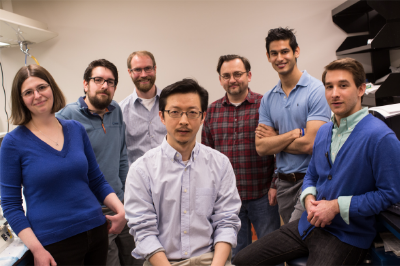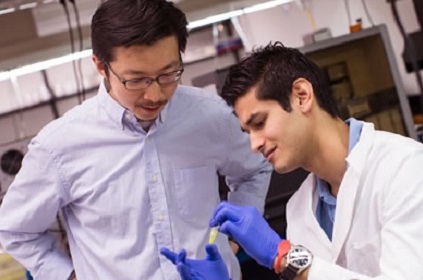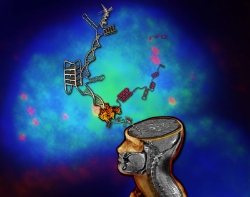ALS-Linked Gene Causes Disease By Changing Genetic Material’s Shape
Unusual process may also explain some dementias

Johns Hopkins researchers say they have found one way that a recently discovered genetic mutation might cause two debilitating nervous system diseases. While the affected gene may build up toxic RNA and not make enough protein, the researchers report, the root of the problem seems to be snarls of defective genetic material created at the mutation site.
The research team, led by Jiou Wang, PhD, an assistant professor of biochemistry and molecular biology at the Johns Hopkins Bloomberg School of Public Health, reported its finding on March 5, 2014 in the journal Nature’s website.

Two years ago, researchers linked the gene C9orf72, named for its location on the ninth human chromosome, to amyotrophic lateral sclerosis (ALS), the progressive and fatal illness, commonly known as Lou Gehrig’s disease, and to frontotemporal dementia (FTD). In ALS, motor neurons—nerve cells that carry messages from the brain to muscles —degenerate and eventually die, which gradually paralyzes the patient. In FTD, neurons in the frontal and temporal lobes of the brain die. Some scientists think the same genetic and biological processes cause both disorders, but with very different symptoms, depending on where in the brain they occur.
The mutation in C9orf72 is called a hexanucleotide repeat expansion, a six-letter "word" of DNA repeated over and over, in a part of the gene that doesn't contain instructions for making any proteins. Although it's normal to have up to 20 such repeats, some people with ALS or FTD have dozens or even hundreds of them. Studies show the mutation is likely responsible for 4 to 8 percent of cases of sporadic ALS—the kind that isn’t necessarily hereditary—and, in some groups, up to 40 percent of the kind that is.
To learn how the repeated sequence causes disease, the Johns Hopkins scientists looked at the structure of the DNA that makes up the gene and the RNA that carries its instructions. Although DNA and RNA are generally seen as long strands, they can bunch and curl to make 3D structures.
Working with DNA and RNA they made that bore the six-letter "word" repeat, the researchers figured out that both were forming structures called G-quadruplexes. In these formations, guanines—called “G” for short, one of the letters in the repeating DNA “word”—link up, making stacks that stick together like tiny shelves. The RNA also forms other shapes in the repeating section — hairpins and bulges. The researchers speculate that the G-quadruplexes and other structures might be getting in the way of the nucleic acids’ normal functions.

The researchers also found that when the cell is making a new strand of RNA based on the C9orf72 gene, it often fails partway through, filling the cell nucleus with pieces of RNA that don't work.
Wang and his colleagues say the broken, clumped RNA molecules appear to be the villains in the diseases caused by the repeated DNA. They counted the proteins that bind to the “bad” RNA and came up with a list of 288 different proteins that are stuck to RNA and are not doing their normal jobs.
One of the proteins that binds to the bad RNA is nucleolin, a protein involved in making ribosomes, which build proteins. The researchers found that in brain cells from healthy people, nucleolin was in the part of the cell nucleus where it should be, where ribosomes are made. But in cells from people with ALS, the nucleolin was scattered all over the nucleus. This suggests that the repeats may also be sabotaging the important functions played by RNA-binding proteins such as nucleolin, Wang says.
It's still possible that C9orf72's product—the protein it codes for—will turn out to be important. “It could be simultaneous—bad RNA accumulating, plus you're losing some of the protein itself,” Wang says. But, he says, this study shed light on how the gene affects both RNA and protein and causes disease.
